INTRODUCTION
The tri-state area of southeast Iowa, northeast Missouri and western Illinois, is renowned for its geodes.
The roundish hollow crystal-filled rocks are collectively referred to as 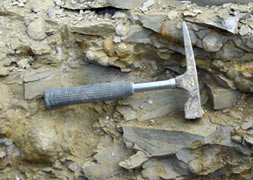 "Keokuk Geodes", having been named after the city of Keokuk, Iowa located in the heart of the collecting area. Most of the geodes are derived from the lower Warsaw Formation, a widespread rock unit of Mississippian age. Calcium carbonate and clay muds deposited in a shallow sea about 340 million years ago were subsequently lithified to form the shales, shaley dolomites, and limestones. Geodes can be dug out of exposures of the
"Keokuk Geodes", having been named after the city of Keokuk, Iowa located in the heart of the collecting area. Most of the geodes are derived from the lower Warsaw Formation, a widespread rock unit of Mississippian age. Calcium carbonate and clay muds deposited in a shallow sea about 340 million years ago were subsequently lithified to form the shales, shaley dolomites, and limestones. Geodes can be dug out of exposures of the 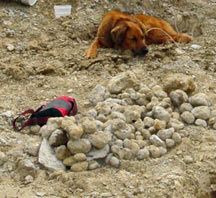 lower Warsaw Formation where they are concentrated in certain layers. Loose geodes can also be collected in stream channels where water has eroded the rock.
lower Warsaw Formation where they are concentrated in certain layers. Loose geodes can also be collected in stream channels where water has eroded the rock. Geodes from the Keokuk area contain a variety of minerals, but quartz is dominant in most. Beautiful transparent to white quartz crystals cover the interior walls of many geodes. Chalcedony forms the outer shell in all Keokuk geodes. White, gray, blue, yellow or orange chalcedony also encrust the interior walls of many geodes. Calcite is common and occurs in many crystal habits and colors. An additional 17 minerals have been identified in Keokuk geodes; some of the more noteworthy include: kaolinite, dolomite, pyrite and sphalerite.
COMMERCIAL COLLECTING LOCATIONS
The following is a list, including contact information, for the major commercial collecting locations in the Keokuk area. You should call each of the following locations before you go for details.
Jacob's Geode Shop and Mine 823 East County Rd 1220
Hamilton, IL 62341
(217) 847-3509
Dennis Stevenson Geodes
625 S. 18th St., Hamilton, IL
(309) 337-3089
Nick's Geodes
251 North 7th Street
Hamilton, Illinois
(217) 219-1263
Sheffler's Rock Shop and Geode Minee
Hwy 61
Alexandria, MO 63430
(660)-754-1134
GEODE FEST
The Worthen Earth Searchers of Hancock County rockhounding club sponsors the annual GEODE FEST generally held each Fall. Guided tours are held to various geode collecting locations throughout the area. This is perhaps the best way for new rockhounds to learn how and where to collect Keokuk area geodes. For more information, check out the following web page: Keokukiowatourism. Check out Roctoberfest 2007 for McRocks.com reports about the Geode Fest 2007.
COLLECTING TOOLS
A general list of tools for Keokuk Geode collecting include: mattock, prybar, shovel, crack hammer and pointed and flat chisels.
OPENING (CRACKING) GEODES
You will want to open up the geodes according to how you would like to display them and/or their contents. You will need to cut them in half with a rock saw if you want to polish the cut ends. However, one problem with this method is that you will ruin any crystals that penetrate through the center of the geode and the saw fluid may damage or destroy more delicate minerals. After cutting a geode with a rock saw, its halves can be put onto a flat lap for polishing. If a more natural look is preferred, you have two available options for opening them.
First, the geode should be placed onto the ground and a score line should be made around the entire circumference with a hammer and flat chisel. You may have to go around and around the circumference of the geode several times to create get a good score. After the scoring, slightly more force should be applied to the score mark with the hammer and chisel until a crack develops. The crack can then be opened up by prying with a screwdriver so you can end up with two near equal halves.
The second and much easier and effective method for opening geodes would be a wheeler-type soil pipe cutter.
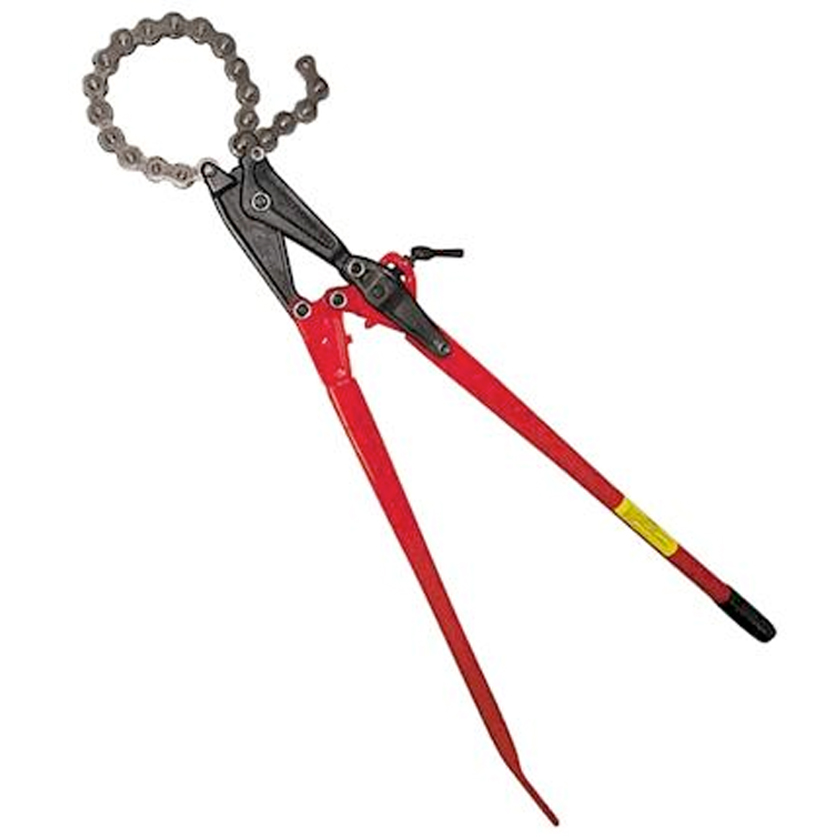
Wheeler-Rex 590 Soil Pipe CutterWheels integrated into the chain apply even pressure around the entire circumference of the geode and split it into equal halves. A pipe cutter is generally considered the best way of opening Keokuk area geodes since it is much easier than scoring and whacking with hammer and chisel and the helps protect delicate crystals. However, a soil pipe cutter like the one pictured above will only crack geodes up to around 10-inches in diameter. Larger pipe cutters are available but are very costly so that scoring and whacking method is, by default, the preferred method to crack very large geodes.
The following pictures illustrate the proper use of a soil pipe cutter.
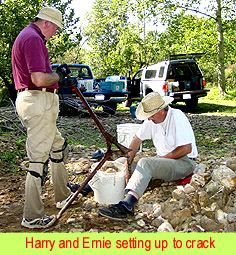
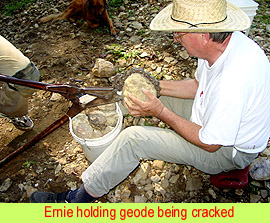
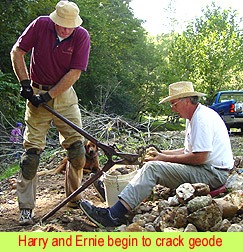
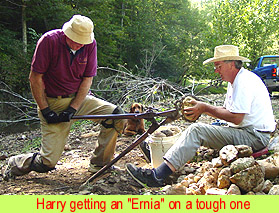
CLEANING DIRT & IRON OXIDE STAINING
A power washer is the best way to remove dirt and other debris from inside and outside of a geode. However, you should be careful about how much pressure you apply (use a fine spray) when a geode contains delicate minerals. Some geodes that contain extremely delicate minerals, such as millerite, that will not hold up to water at any pressure should not be cleaned at all but left as is. Wear sturdy gloves and safety glasses if you have to hold the geode to spray it.
To remove the iron oxide from quartz and other minerals that will hold up to being cleaned by water, Iron Out rust stain remover may be employed according to the following procedure:
1. Submerge the specimens in a tub or other air-tight plastic container with very hot water. If shocking
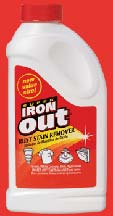
and cracking of minerals such as large quartz crystals is a concern, you should find a way to heat up the specimens slowly such as in the kitchen sink using a water sprayer. You should start with a warm spray and gradually (over about 3 to 5 minutes) turn up the heat to maximum and then you can submerge the specimens in very hot water.
2. Sprinkle in a copious amount of Super Iron Out to the hot water (there is no rule on how much, but start with about 1 cup of super iron out per gallon of water). You MUST add the Super Iron Out outside and upwind due the noxious fumes that will be emitted. I highly recommend that you wear a half-face respirator with chemical cartridges when you add the Super Iron Out. You should also use a respirator when you pull the specimens out of the solution. Be aware that whatever clothes you are wearing will absorb some of the odor from the Super Iron Out. It works best to place a lid on your container.
3. Allow the specimens to soak in a warm place for one to several days.
4. Check the progress after a day (wear a respirator when you pull the lid off or the fumes may knock you on your butt or, worse, stop you from breathing!!!). Use rubber gloves to retrieve the specimens from the solution.
5. Repeat steps 1-4, if necessary (it often is with heavy iron oxide coatings).
6. When sufficiently clean, soak the specimens in clean water for a day or two, changing the water out one or more times.

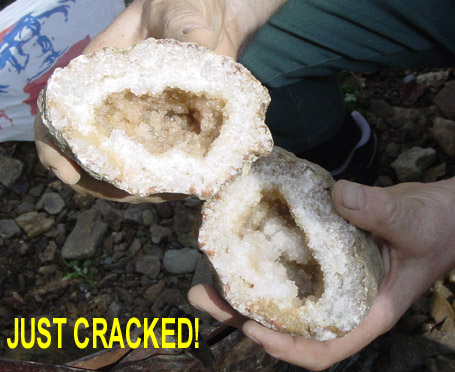
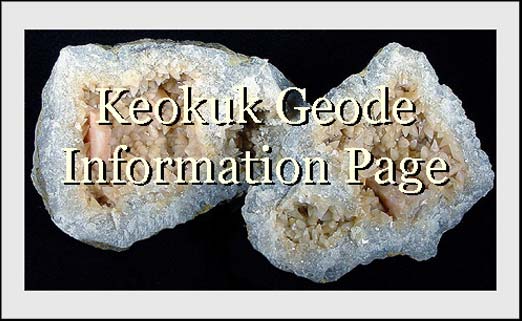
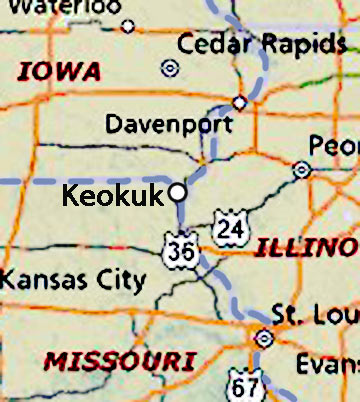
 "Keokuk Geodes", having been named after the city of Keokuk, Iowa located in the heart of the collecting area. Most of the geodes are derived from the lower Warsaw Formation, a widespread rock unit of Mississippian age. Calcium carbonate and clay muds deposited in a shallow sea about 340 million years ago were subsequently lithified to form the shales, shaley dolomites, and limestones. Geodes can be dug out of exposures of the
"Keokuk Geodes", having been named after the city of Keokuk, Iowa located in the heart of the collecting area. Most of the geodes are derived from the lower Warsaw Formation, a widespread rock unit of Mississippian age. Calcium carbonate and clay muds deposited in a shallow sea about 340 million years ago were subsequently lithified to form the shales, shaley dolomites, and limestones. Geodes can be dug out of exposures of the  lower Warsaw Formation where they are concentrated in certain layers. Loose geodes can also be collected in stream channels where water has eroded the rock.
lower Warsaw Formation where they are concentrated in certain layers. Loose geodes can also be collected in stream channels where water has eroded the rock. 



 and cracking of minerals such as large quartz crystals is a concern, you should find a way to heat up the specimens slowly such as in the kitchen sink using a water sprayer. You should start with a warm spray and gradually (over about 3 to 5 minutes) turn up the heat to maximum and then you can submerge the specimens in very hot water.
and cracking of minerals such as large quartz crystals is a concern, you should find a way to heat up the specimens slowly such as in the kitchen sink using a water sprayer. You should start with a warm spray and gradually (over about 3 to 5 minutes) turn up the heat to maximum and then you can submerge the specimens in very hot water.